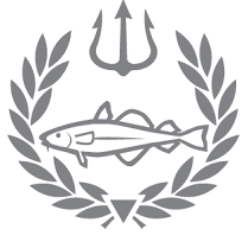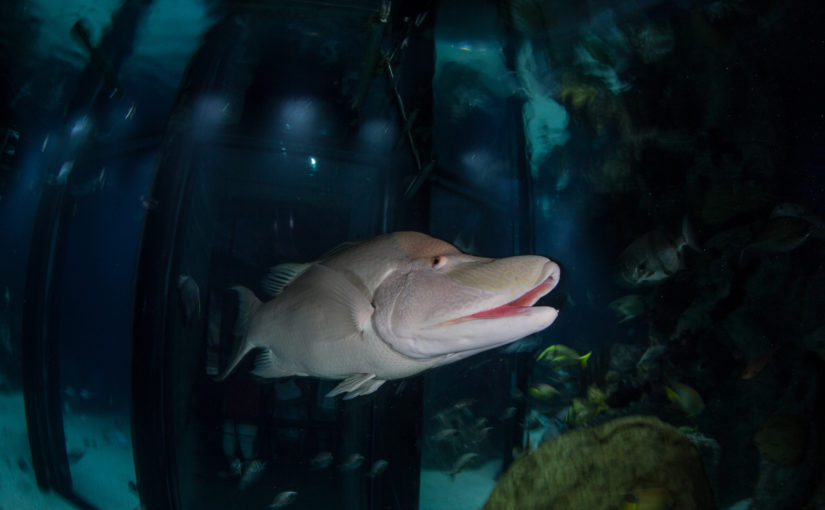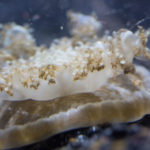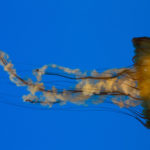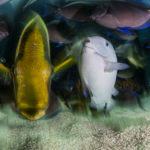My morning started by getting food ready for the aquarium’s many animals. I cut up a crab, and stuffed squid and bait fish with vitamin pills for the sharks and rays in Black Tip Reef. I worked with Emily Anderson and Katie Diciccio, divers and aquarists who help run the Atlantic Coral Reef and Black Tip Reef. We headed down to feed the large whiptail rays and the nine black tips in the newest exhibit Black Tip Reef. To feed the rays we used a long pole and forced it in front of their face then they would sit up on it and chew the food on the end. You could feel them chewing and almost hear a crunching sound coming up the pole. After the four rays were all feed we moved on to the sharks. The exhibit has two zebra sharks, nine black tips, and a couple wobbegongs. We fed the black tips by hanging a target just above the water as sort of a training measure they would touch or go around the red buoy and be fed. Instead of the target feeding of the rays this was a broadcast feeding of all the black tips at once. It was at times a mass frenzy throwing squid and fish parts near their faces.

After feeding the sharks I went over to the jellies department, where I met Annie Miller, one of the aquarists for the jellies. She explained the ins and outs of how to keep such delicate creatures alive in captivity with certain amounts of current and food. One of the major things that the jellies department tries to avoid is “jelly jams”, this is when the current is to weak or strong and the jellies begin to get stuck in the filtration system and can clog the pipes and kill the whole tank if not taken care of. After being introduced to all the jellies on exhibit I went over to the jelly culture lab where the team cultures the jellies and raises them to be put on exhibit. The lab raises most of the jellies that go to exhibit and any that they have and don’t need can be shipped to other aquariums or be feed to other jellies. Matt Wade is one of the directors of the jellies culture lab and is currently working on raising box jellies. Because they are level one venomous animals they are taken very seriously, though they are only a few centimeters now they could grow very big and be extremely dangerous. Matt showed me some of the jellies under the microscope looking at the different life stages and how complex they are. For being considered so simple and well brain less they are actually very complex.

After lunch I headed around with a couple of the gallery aquarists. I first worked with Roxie Garibay who runs the live corals gallery. She went through the care and maintenance of these tanks and how important it is to keep track of the health of the corals. We fed a few of the fish and she showed me how they grow corals behind the scenes. I next worked with Allen Kattyan who runs a few different galleries from the striped bass, to the shipwreck and kelp forest tanks. What amazed me most is that he dives in some of the tanks filled with pieces of fake shipwrecks and totally cramped. For Holly it’s a hard job to keep him safe in such a small enclosed area and if anything went wrong it wouldn’t be very good.


After working with the aquarists I headed to the dive locker for my third and final dive in the Atlantic Coral Reef. I again went in with the volunteers except today was the Tuesday A team. I photographed a lot of the same subjects refining my shots from the other day. I got some good shots of Simon the sting ray and of the super male hogfish in the tank that is Holly’s favorite fish.
